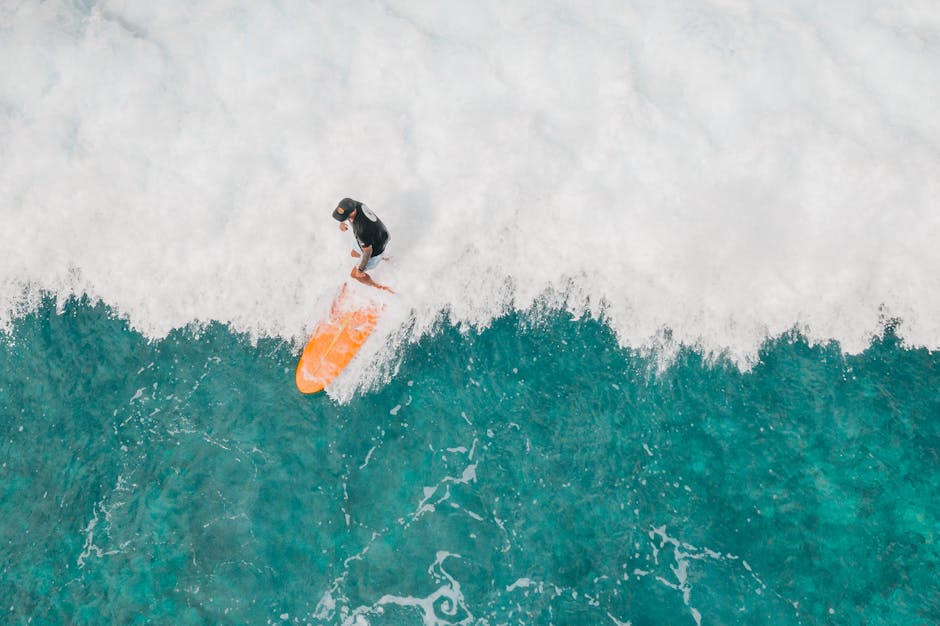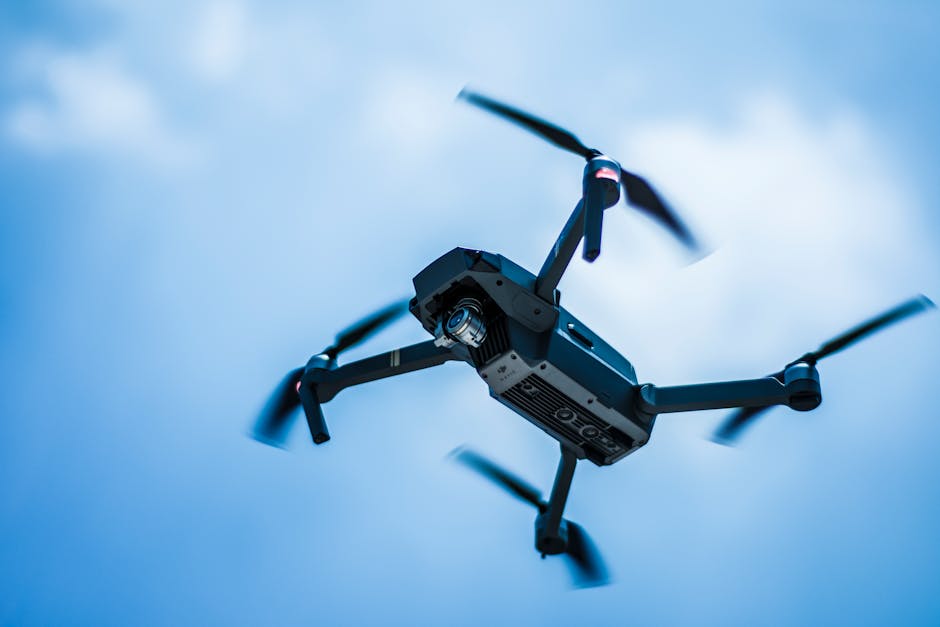Using Drones to Capture Aerial Shots on Your Travels
Capturing breathtaking aerial shots has become a popular way to document travels, with drones offering new perspectives that were once only achievable by helicopter. Whether you're soaring over mountains, coastlines, or urban landscapes, drones can give you stunning footage that enhances your travel memories. They offer not only high-quality images and videos but also the ability to explore areas that are otherwise inaccessible on foot or by traditional means.

The growing accessibility of drone technology has made it easier for amateur photographers and travelers to take professional-looking aerial photos. Lightweight models are now available at various price points, making them suitable for travelers on the go. Before flying a drone on your next adventure, there are several important factors to consider, such as legal regulations, safety precautions, and how to get the best shots from the skies.
Choosing the Right Drone for Travel
Not all drones are created equal when it comes to travel photography. Some are designed for professionals and come equipped with advanced features like 4K resolution cameras and longer battery life. Others are more compact and affordable, suitable for beginners who want to experiment without breaking the bank.
- Camera Quality: Look for a drone with a high-resolution camera, preferably 1080p or 4K. This will ensure that your aerial shots are crisp and clear.
- Battery Life: Most consumer-grade drones have a battery life of around 20-30 minutes per charge. Consider bringing spare batteries if you plan on capturing footage over extended periods.
- Portability: For travel purposes, lightweight and foldable drones are preferable. This makes them easier to pack and transport.
- Stability Features: Drones with GPS stabilization or gimbals offer steadier shots even in windy conditions, which is essential for high-quality footage.
Understanding Local Drone Laws
One of the most important aspects of flying a drone while traveling is understanding local regulations. Different countries have varying laws regarding where and how you can fly a drone. Some locations may require you to have a permit or even ban drones entirely in certain areas like national parks or military zones.
The Federal Aviation Administration (FAA) in the U.S., for example, requires all recreational drone pilots to register their drones if they weigh between 0.55 lbs and 55 lbs. You must also follow airspace rules and avoid restricted areas such as airports or stadiums during events (faa.gov). Before traveling internationally, research each destination's specific rules to ensure compliance. Failing to follow these guidelines could result in hefty fines or confiscation of your equipment.
Tips for Capturing Stunning Aerial Shots
Capturing great aerial images goes beyond simply getting your drone airborne. The right techniques can make a world of difference in the quality of your photos and videos.
- Golden Hour: The best lighting occurs during sunrise or sunset when the sun is low on the horizon. This time of day adds warmth and depth to your shots.
- Framing: When composing your shot, use natural elements like mountains, rivers, or buildings to frame your subject from above.
- Avoid Overexposure: Since drones capture shots from high altitudes where there’s often more sunlight, adjust exposure settings to prevent overly bright images.
- Smooth Movements: Sudden movements can result in shaky footage. Fly your drone slowly and steadily to achieve cinematic quality video.
Safety Precautions While Flying
Drones are powerful tools but need to be used responsibly, especially in public places or around wildlife. Always prioritize safety both for yourself and others around you when operating your drone.
Avoid Crowded Areas: Flying over crowded beaches, festivals, or public spaces can be risky if something goes wrong with your drone’s operation. Opt for open spaces with fewer people whenever possible. Check Wind Conditions: Windy weather can make it difficult to control your drone, potentially leading to crashes or lost equipment. Use Return-to-Home Features: Many modern drones have a “Return-to-Home” function that brings them back safely when the battery is low or they lose signal with the controller. Avoid Wildlife: Drones can disturb animals if flown too closely. Avoid using them near nesting sites or protected wildlife areas where they might cause harm or disruption (nps.gov).
Edit Your Footage Like a Pro
The post-production phase is where your footage truly shines. Editing tools such as Adobe Premiere Pro or Final Cut Pro allow you to fine-tune color grading, cut unnecessary scenes, and add music or effects. Even free software like iMovie offers basic editing features that can greatly improve raw footage before sharing it on social media platforms or storing it in personal archives.
Add Music: A well-chosen soundtrack can elevate the emotional impact of your footage. Edit Transitions: Smooth transitions between clips prevent jarring cuts that disrupt viewing flow. Use Filters: Filters like ND (Neutral Density) lenses help manage light exposure during filming but can also be added during post-production to balance colors. Cinematic Aspect Ratio: Adjusting the frame ratio (e.g., from 16:9 widescreen) adds a professional feel to your final video.
What's Next for Drone Photography
Drones are constantly improving with advancements like obstacle avoidance systems and AI-powered automatic flight modes. These features make aerial photography more accessible than ever before while maintaining safety standards. Many companies are even integrating virtual reality into drone operations, allowing pilots to control their devices through immersive headsets, a game changer for those seeking next-level travel experiences.

No matter where you plan on flying your drone next (whether over sandy deserts or dense forests) the key is preparation: know your gear, familiarize yourself with local laws, practice good safety habits, and focus on improving both your technical flying skills and creative vision behind the camera lens.
Leveraging Social Media to Amplify Your Drone Photography
As drone photography continues to captivate audiences, social media offers an unparalleled platform for sharing your work with the world. Whether you're a hobbyist or an aspiring professional, effectively utilizing social media can transform your aerial shots from personal keepsakes into widely appreciated visuals. By harnessing the power of platforms like Instagram, YouTube, and TikTok, you can not only showcase your creativity but also engage with a community of like-minded individuals and even build a following that could open new opportunities.
Here are some strategies to help you maximize your presence on social media through your drone photography:
1. Choose the Right Platform
Different social media platforms cater to different types of content and audiences. Understanding which platform works best for your drone photography can significantly enhance your reach and impact:
- Instagram: Perfect for sharing high-quality still images, Instagram's visual-first approach is ideal for photographers. Utilize Instagram Stories and Reels to share behind-the-scenes content or quick snippets of your drone adventures.
- YouTube: As the second-largest search engine after Google, YouTube is a fantastic platform for long-form video content. Upload stunning aerial footage set to music or create tutorials showing how to achieve specific drone shots.
- TikTok: While traditionally associated with short, entertaining clips, TikTok has increasingly become a platform for creatives to share quick but impressive visuals. It’s an excellent place to show dramatic clips of aerial landscapes in under 60 seconds, appealing to younger audiences.
2. Optimize Your Content for Engagement
To stand out amidst a sea of content creators, it's essential to optimize both your posts and interactions. Use these tactics to enhance engagement:
- Hashtags: Hashtags increase the discoverability of your posts. Use location-based tags (e.g., #dronephotography, #aerialshots, #dronestagram) and trending hashtags relevant to travel and landscape photography.
- Post Consistently: Regular updates keep your audience engaged. Posting consistently (whether daily or weekly) will help maintain visibility in the ever-changing algorithms of most social platforms.
- User Interaction: Responding to comments, liking posts from others in the community, and following other drone photographers helps build engagement. Building relationships fosters loyalty within your audience.
3. Use Editing Tools Built for Social Media
Many social platforms favor videos and images that are created natively within their apps or edited in ways that align with their unique style. For example:
- Instagram Filters: Leverage Instagram’s built-in filters or use third-party apps like VSCO or Lightroom Mobile to enhance colors and sharpen details before posting aerial photos.
- TikTok’s Music Library: Pairing the right music with captivating aerial shots can make all the difference in engagement on TikTok. Choose popular or trending tracks to boost visibility in the app’s algorithm.
4. Collaborate With Influencers or Brands
If you're looking to elevate your social media presence further, collaborations can be a powerful strategy:
- Influencers: Partnering with travel influencers who align with your niche can expose your drone content to larger audiences that might not have discovered you otherwise.
- Sponsorships and Brand Deals: Brands specializing in travel gear or drone technology frequently collaborate with creators who have significant followings. Building relationships with these companies may lead to paid sponsorships or product promotions.
5. Tell Stories Through Your Visuals
A great photo or video can evoke emotions and tell a story. Rather than simply posting random aerial shots, curate your content into meaningful series or narratives that take viewers on a journey through the locations you capture from above.
- Themed Series: Consider grouping your drone photos by theme, whether it's a particular destination, type of landscape (e.g., beaches, mountains), or specific time of day (e.g., sunrise/sunset).
- Add Captions That Connect: Don’t just let the visuals do the talking; write compelling captions that provide context, insights, or background stories about each location you fly over.
6. Analytics: Understand What Works
No social media strategy is complete without reviewing data and adjusting accordingly. Most major platforms offer analytics tools that show which posts perform best in terms of engagement (likes, shares, comments) and reach.
- Instagram Insights: Analyze metrics such as likes per post, follower growth trends, reach (the number of unique accounts that saw your post), and saves (which indicate deeper engagement).
- YouTube Analytics: Monitor watch time, viewer demographics, traffic sources (where people are finding your videos), and click-through rates on thumbnails.
Taking time to understand these numbers will help you tailor future content towards what resonates most with your audience.
Responsible Sharing
Your audience isn’t just there for pretty pictures, they’re looking for inspiration and knowledge. Take this opportunity seriously by sharing responsibly. Mention local laws or guidelines if flying in sensitive areas such as protected wildlife zones or near crowded landmarks. Ethical storytelling will earn you more respect within both the travel and photography communities while setting an example for others aiming to capture aerial beauty safely and responsibly.